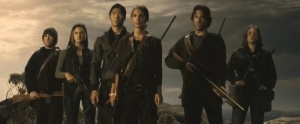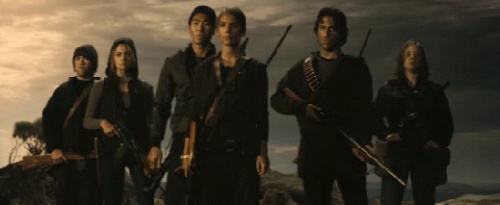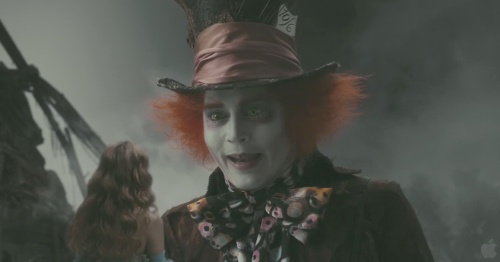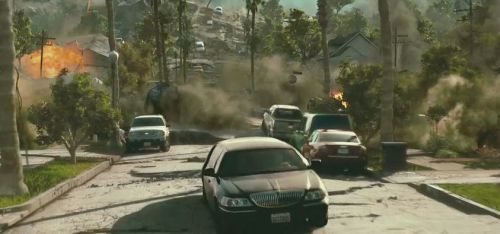As an urban planner and a filmy watchy guy, I’m particularly fascinated by the way our ideas about cities and towns are shaped by the environments we see in film and television. You can get a giant size chunk of my research on this by reading the essay here, but as another little snippet, consider Hill Valley in Back to the Future.
Film
The Social Network (David Fincher, 2010)
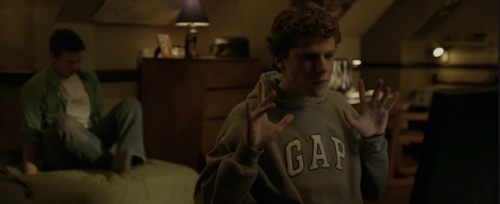
Early in David Fincher’s Facebook origin story The Social Network, nerdy and socially inept Mark Zuckerberg (Jesse Eisenberg) is chatting to the Winklevoss twins (both played by Armie Hammer). Zuckerberg has proven himself a programming whiz with a campus-blitzing piece of computer hacking; they’re a pair of old-money golden boys looking to recruit him to work on their start-up web business. Despite the modern trappings, the exchange is filtered through more traditional power dynamics, with the tall, good-looking, WASP Winklevosses deigning to let the thin, geeky, Jewish Zuckerberg into the entry hall of their exclusive campus fraternity. It’s at that moment that the analogy between David Fincher’s prestigious Oscar-favourite drama and a campus fraternity comedy such as Animal House snaps into focus.
Dreams Come True (ACMI, 18 November 2010 – Tuesday 26 April 2011)
 When putting together a museum exhibition I guess one of the key questions is: “who is the audience here?” When reviewing an exhibition, that question might even be more critical.
When putting together a museum exhibition I guess one of the key questions is: “who is the audience here?” When reviewing an exhibition, that question might even be more critical.
I have written a previous grumpy review of an exhibition at ACMI (about their Setting the Scene exhibition) and at the time raised the issue that maybe part of the problem was that I wasn’t the intended audience. In that case, I was actually too interested in the subject matter: if an exhibition is pitched at a general audience, someone very caught up in the subject is perhaps inevitably going to judge the material harshly. ACMI’s latest, the Dreams Come True exhibition of fairy-tale themed Disney material, also covers material I’m particularly interested in. So, once again, I have to flag that perhaps I’m a little too close to this to give the exhibition a completely fair go.
Tomorrow, When the War Began (Stuart Beattie, 2010)
Stuart Beattie’s adaptation of John Marsden’s Tomorrow, When the War Began, about a group of teenagers dealing with an invasion of Australia, lets us see two interesting examples of Australian nationalism at work.
The first is a strange, misguided pride in local product. Beattie’s film has been greeted with generally kind reviews from local critics, and it seems Australians have been indulgent of a film that dares to do what Hollywood movies routinely do but Australian films generally don’t. This isn’t about a father and a son reuniting on a road trip through the outback, or a family confronting secrets about their past while out on a farm in the outback, or an examination of the travails of indigenous Australians in remote communities in the outback. This is about a war! And explosions! And there are fighter planes and stuff! And we made it, and it mostly doesn’t look fake!
Alice in Wonderland (Tim Burton, 2010)
The best-remembered of the many adaptations of Lewis Carroll’s two “Alice” books is the animated adaptation released by the Disney Studio in 1951. Walt Disney, who worked on his version on and off for the best part of fifteen years, was renowned for his story sense: an uncanny ability to sense and solve story problems, as well as a knack judging the taste of the public. So what did he make of Alice in Wonderland as a story? Well how about:
“[I got] trapped into making Alice in Wonderland against my better judgement.”
And:
“[It was] a terrible disappointment.”
And:
“We just didn’t feel a thing, but we were forcing ourselves to do it.”
And:
“The picture was filled with weird characters.”
Disney had realised (too late) that Carroll’s books are essentially the opposite of what a Hollywood narrative is supposed to be. They centre on a character who we never identify with on any emotional level; who embarks on her adventures without any clear purpose; and who is tormented by a series of unsympathetic characters for no clear reason. Carroll therefore breaks all the rules of conventional Hollywood narrative: that we have an emotional connection with the protagonist; that the plot unfolds through a series of events that happen for clearly outlined reasons; and that characters have clear motivations for their actions. The randomness, nonsense, and mind games of Carroll’s Wonderland are a big ask for Hollywood.
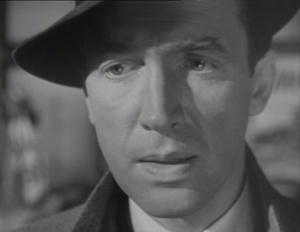 It’s a Wonderful Life (Frank Capra, 1946)
It’s a Wonderful Life (Frank Capra, 1946)
In his autobiography The Name Above the Title, Frank Capra was straightforward in his self-assessment of It’s a Wonderful Life. “I thought it was the greatest film I had ever made,” he wrote, adding: “Better yet, I thought it was the greatest film anybody had ever made.” We might fault Capra for saying it himself, but the passage of time has largely vindicated his hubris. As fewer and fewer films from the middle of the twentieth century are revived, It’s a Wonderful Life remains one of the perennial standards, still widely loved by popular audiences rather than just a hard core of film buffs. Its impact on audiences remains strong: the dulling of impact usually wrought by the passage of time has not appreciably weakened the film. This is particularly surprising given the its firm footing in its time. The film expresses many of the fears and hopes of America after World War II, and is one of the most rewarding films to study in looking at the values espoused by Hollywood at the start of the post-war era.
We do the film a disservice, though, if we only consider it as a social document and forget its value as an entertainment. As a film designed to get an emotional response, it is about as effective as any made. This at first seems to be for straightforward reasons. It is a sentimental story of an impossibly good man – George Bailey, played by one of the twentieth century’s most charismatic actors, James Stewart – who gives up many of his dreams to support his family, friends, and community. Bailey falls on bad times, is mistreated, and loses faith… only to regain it at the conclusion of the film. Broadly speaking, it’s a classic Hollywood trajectory and the impact of the film might therefore seem not at all mysterious. The extreme goodness of Bailey gets us on-side, and we have a hissable villain to contrast him with in the corrupt developer Henry Potter. The misfortunes that fall upon our good character arouse our sympathies, and we can cheer when he overcomes them. Yet there’s something more going on here than this standard storytelling device. Beyond the broad sweep of the story, the film’s approach is actually highly unusual and rarely imitated.
Avatar (James Cameron, 2009)
James Cameron’s long-awaited Avatar is at once a state-of-the-art journey through imagined interstellar landscapes, and a rather more prosaic expedition through familiar story-telling terrain. “Great effects, so-so story” is perhaps the classic form of review for post-1977 Hollywood movies, and it’s a little sheepishly that critics have arrived once again at this basic conclusion. Yet, they have, in droves, because at the fundamental level that’s the key conclusion to be drawn about Avatar. The more interesting points to make about the film, then, aren’t those most important but most obvious observations. The sub-plots here – like the progress of James Cameron’s once-imposing directorial career, or whether the film is a giant leap in the evolution of film technology – are rather more interesting.
Stuart Wilson of hoopla pointed me to this post at FlickFilosopher, and asked my view on the suggestion that this the best year ever for animated films.
The short answer is “no, that’s silly.” Even the author of the original article talks about it mainly in terms of volume of good films. It’s true, the animation industry is humming along, and we can give bonus points for the return of hand-drawn theatrical animation in the US with The Princess and the Frog, but looking at it by volume just changes the rules so much the notion of a “best year ever” becomes meaningless.
To justify such a claim you surely should be able to point to some really landmark works, or at least a field of such enduring excellence it makes the year special, in much the same way 1939 is often talked about in the live action context. I can’t see anything of that quality about, despite all the good releases this year.
2012 (Roland Emmerich, 2009)
In his book Ecology of Fear: Los Angeles and the Imagination of Disaster, Mike Davis notes the particular enthusiasm in popular culture for destroying Los Angeles, and categorises the different ways in which the city bites the dust. Nuclear weapons lead the way with 49 surveyed works. Earthquakes: 28 works. Invasion: 10. Monsters: 10. Pollution: 7. Gangs or terrorism: 6. Floods: 6. Plagues: 6… and so on. What nobody, so far, had seen fit to do was just tip Los Angeles over and throw it in the ocean.
Enter Roland Emmerich.
Spotted over at MaryAnn Johanson’s site, and too clever not to share – Raiders of the Lost Ark, 1950s style. It’s not quite as good as Raiders of the Lost Ark as made by a bunch of kids, but it’s still pretty cool. And certainly better than Indiana Jones and the Kingdom of the Crystal Skull.

